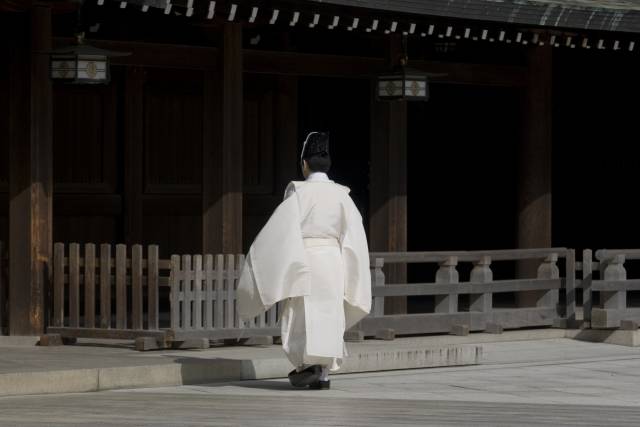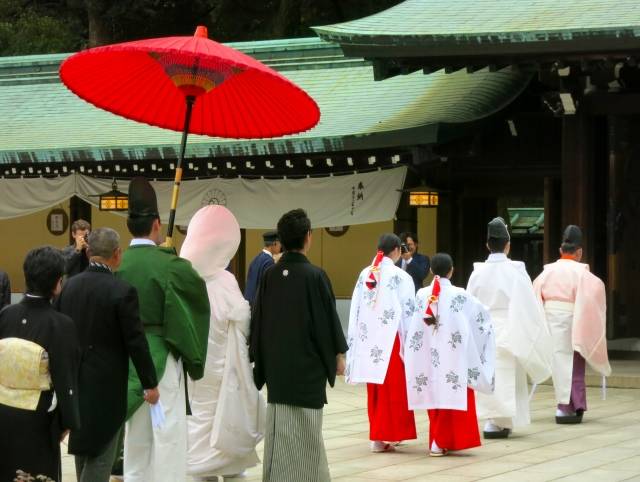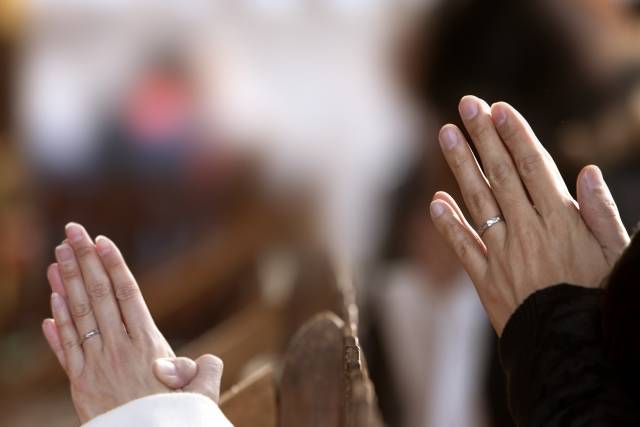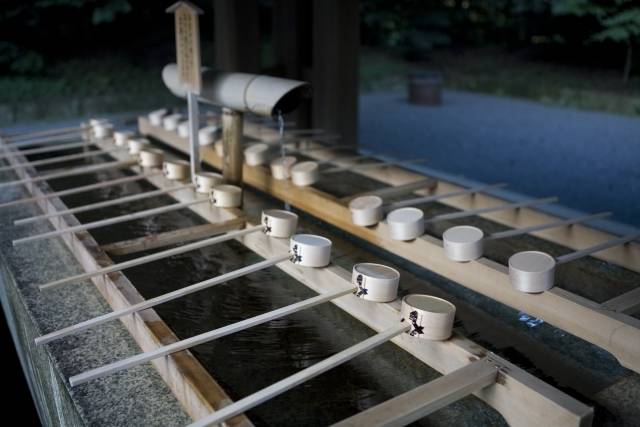Meiji Shrine - Everything You Need to Know

The Meiji Shrine is one of the most famous Shinto Shrines in Japan. Next to Yoyogi Park it is a peaceful spiritual resting spot mere steps from Harajuku Station in the center of bustling Tokyo. In this article, we want to tell you everything you need to know about Meiji Shrine, as well as the do’s and don’ts when visiting a Japanese Shrine and other top tips!
The History of The Meiji Shrine

The Meiji Shrine is one of the most famous Shinto Shrines in Japan. Shinto is considered to be Japan’s ancient original religion and has thousands of “kami” or gods, but it has no religious book but rather values harmony with nature.
The Meiji Shrine was built in 1920 and dedicated to the spirits of Emperor Meiji and Empress Shoken (their actual tombs are in Kyoto). The Shrine was completed 8 years after the Emperor passed on (bringing an end to the Meiji Period) and 6 years after the Empress passed on. At 7.5 million square feet (700,000m2) it is one of the largest Shinto Shrines in Japan!
Emperor Meiji was the 122nd Emperor of Japan and the first emperor of modern Japan. He reigned from 3 February 1867 until his death on 30 July 1912 and oversaw the dramatic change of Japan from a feudal isolationist country to a capitalist, industrialized world power. This was known as the Meiji Restoration and is responsible for the modern Japan we see today.
The Shrine, originally constructed in 1920 was actually destroyed in a bombing during the Second World War and was rebuilt with public donations in 1958. The parkland surrounding Meiji Shrine is a veritable forest of over 100,000 trees from all over Japan and overseas planted by an army of volunteers.
Facilites
Torii

© TCVB
There two “torii” gates (the traditional Japanese wooden gates) at the entrances to the Meiji Shrine are 40 feet tall (12 meters) and passing through the gate is symbolic as it shows you are passing from everyday life and entering a sacred place.
Treasure Hall
The treasure hall is located north of the main Shrine and is a museum housing various personal items that belonged to the Emperor and Empress. Opened one year after the Shrine itself was completed it shows the people’s devotion to the Emperor Meiji. There is also an annex to the treasure hall which holds temporary exhibits (Admission 500 yen).
Inner Garden
One of the most beautiful areas of the Shrine is the Inner Garden, one of the only parts of the inner precinct that existed long before the establishment of the Shrine itself. It is said to have been designed by Emperor Meiji himself for the enjoyment of his wife. The inner gardens also contain the Iris Garden which are very popular in late June when the 150 species of iris come into full bloom (Admission 500 yen).
Please check the opening times for the gardens on the official website before planning your visit here
Meiji Memorial Hall

The Meiji Memorial Hall is the building in which the Constitution of the Empire of Japan was drafted in the late 19th century before its proclamation on February 11, 1889 by Emperor Meiji. It was later donated to the Meiji Shrine and now serves as a ceremony hall for Shinto weddings with restaurants and other facilities. If you are lucky during your visit you might even see a traditional Japanese wedding procession. However, please be respectful of the couple getting married as it is their special day.
Festivals and Hatsumode

Meiji Shrine is one of Japan’s most popular Shrines and in the first days of the New Year it welcomes over 3 million visitors for Hatsumode. This means literally, the first visit for the New Year, when visitors come to pray for good luck in the New Year.
The Spring Festival is held on May 2nd-3rdand the Autumn Festival is held on November 1st-3rd with November 3rd being the Emperor Meiji’s birthday and a national holiday.
There are many other festivals and events taking place throughout the year at Meiji Shrine, please check the official website to find one that coincides with your visit here
How to Visit a Japanese Shrine
When you visit a Japanese Shrine there are many traditional Shinto activities you can participate in. You can make an offering at the main hall by throwing money into the collection box, buying charms or amulets for luck or to keep you safe, and you can even write a wish or prayer on a wooden ema, to be hung up at the Shrine.

However, it is important to be respectful when visiting the Shrine. It is proper to bow once when entering or leaving through the torii (shrine archway). Going through the torii archway, you will see the sando (the path leading up to the shrine). Please note that you should not walk in the center of the sando as it is considered to be a path where the gods walk. When you see the temizuya, or water font, you should pick up the wooden ladle with your right hand, rinse your left hand, then hold the ladle with your left hand and rinse your right hand. Then pour the water into your left hand to rinse your mouth. Then you spit the water quietly into the bottom of the well.
Please note that you cannot drink directly from the ladle. Next, you pour the water over the left hand your mouth touched. Finally, you should rinse the ladle and let the water run down the handle to clean it before returning it to the stand.
At the Shrine to show respect you may make an offering which is followed by two bows, clapping your hands twice, then making a wish, then one more bow.
Also, please do not take pictures or videos from inside the halls, pictures and videos are permitted from outside, but if there is a roof over your head they are not permitted.
Spend a Peaceful Day at Meiji Shrine

© TCVB
Meiji Shrine is a quiet, spiritual place where you can escape the hustle and bustle of Tokyo and enjoy a peaceful walk through the refreshing nature. Make sure you include this special place in your itinerary when you visit Japan!
Information
Take a JR Yamanote Line train bound for Shinagawa and Shibuya. Get off at Harajuku Station (28 minutes) and the Meiji Jingu is about a 6-minute walk from the station.
Address: 1-1 Yoyogikamizonocho, Shibuya, Tokyo 151-8557
Tel: +81 3-3379-5511
Website: http://www.meijijingu.or.jp/english/index.html
Meiji Jingu Shrine is a Shinto shrine dedicated to Emperor Meiji and Empress Shoken. Despite its ...
Reference List
Unmissable Tours
Expand your horizons by interacting with diversity. Take a look at guided tours on which you can connect personally with the guides and have truly extraordinary experiences.
Search










